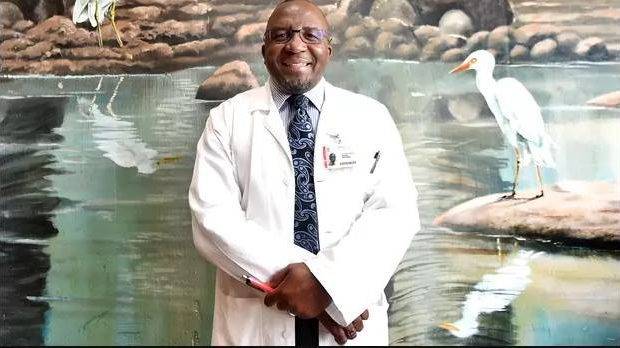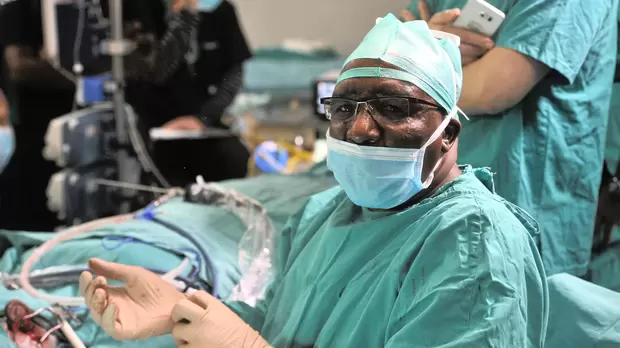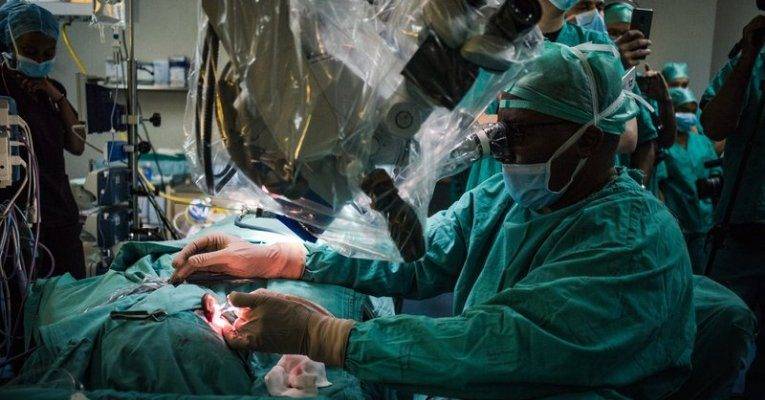An African Doctor Is Helping People Get Their Hearing Back With “3D-Printed Ears” That Actually Work

It was sometime in March this year when Professor Mashudu Tshifularo, a renowned South African ENT specialist, and his team at the University of Pretoria, made history by successfully completing the world’s first-ever middle ear transplant, using 3D-printed middle ear bones.
They effectively replaced the hammer, anvil, stirrup and the ossicles that make up the middle ear. The surgery, which can be performed on everyone including newborns, has benefitted two patients already. The 3D-printing technology is used to print these bones, and it is also used in surgery to reconstruct the ossicles.

Source: iol.co.za
The groundbreaking operation was performed at the Steve Biko Academic Hospital and the first recipient of the surgical procedure was a 35-year-old man who suffered hearing loss as a result of a car crash that damaged his inner ear. He became the world’s first patient to receive a 3D-printed middle ear bone.
The first-of-its-kind surgical procedure was developed by Professor Mashudu Tshifularo and his team at the University of Pretoria’s faculty of health. The procedure is a long-lasting solution to conductive hearing loss and can be performed on anyone, including infants.
Before the breakthrough, Professor Tshifularo had spent 10 years investigating how to find the right prosthesis for this type of surgery. He found that 3D technology was the best solution.
Over the last decade, Professor Tshifularo had focused his Ph.D. on conductive hearing loss and he came up with the idea of using 3D technology to recreate and replace any of the inner ear bones that may be damaged, thus restoring a patient’s hearing.
“Two years ago, I started to see that 3D printing is the way to go. I met with some of my collaborators who agreed we can do this thing. Then the idea became real,” he says.
The middle ear bones were printed out of titanium and Professor Tshifularo foresees that the prosthesis will become accessible to anyone who is in need of it.
“By replacing only the ossicles that aren’t functioning properly, the procedure carries significantly less risk than known prostheses and their associated surgical procedures. We will use titanium for this procedure, which is biocompatible. We use an endoscope to do the replacement, so the transplant is expected to be quick, with minimal scarring,” explains Professor Tshifularo.
At Steve Biko Academic Hospital in conversation with Professor Mashudu Tshifularo who, together with his team, developed a pioneering surgical procedure using 3D-printed middle ear bones at the University of Pretoria’s Faculty of Health #WeCare #GautengATWork pic.twitter.com/zRvnJUFeLl
— Gauteng Health (@GautengHealth) March 13, 2019
The first surgery was successfully completed in one and a half hours, and it was a success despite the fact the trauma suffered by the patient during the accident made things a little bit complicated.
According to the Professor, the patients actually get back their hearing immediately but since they will be wrapped in bandages, only after two weeks, when they are removed, will they be able to tell a difference.
The second surgery was conducted on one Simon Bohale, a 62-year-old who had an underdeveloped middle ear and even saw things worsen in 1983 when his welding job pretty much damaged his hearing. This too was a resounding success.
The 3D-replacement ear surgery is also aimed at simplifying the reconstruction of ossicles during middle ear procedures, such as ossiculoplasty and stapedectomy, so as to jerk up the chance of success while minimizing the risk of intrusion trauma.
Prof. Tshifularo is the Head of the Department of Otorhinolaryngology (ear, nose and throat studies, ENT) at the University of Pretoria (UP), and he is widely recognised as one of the best ENT specialists in the country. His leadership has significantly contributed to the advancement and transformation of the Department.

Since joining the Department, Prof Tshifularo has been the driving force behind many firsts at the University of Pretoria. In November 2008, for example, he performed a bloodless operation known as an endoscope-assisted tonsillectomy using a technique that he developed himself. At the time it was believed to be the first operation of its kind in the world.
About the same period, the Department initiated the Steve Biko-Robert Kerr Cochlear Implants Project — a project that does cochlear implants on patients from poor communities — with Prof Tshifularo as the surgical team leader. This project has been a great success and has introduced many financially and socially-disadvantaged hearing-impaired people to the world of sound.
As an extension of this project, Prof. Tshifularo and his team are in the process of initiating an early childhood hearing rehabilitation and deafness foundation that will serve previously disadvantaged children in the country.
No stranger to firsts, he was also the first black ENT specialist and among the youngest in the country when he was appointed to the Medunsa Department of Otorhinolaryngology in 2001. Since then, he’s had a hand in the training of more black South African ENT specialists than any other institution in the country.
Prof. Tshifularo believes the future of medicine will be shaped by innovation towards excellent, internationally-recognised solutions and the goal is to improve safety and efficiency, and to reduce costs in communities as the field of ENT progresses.
Featured Image Courtesy: Univerisity of Pretoria